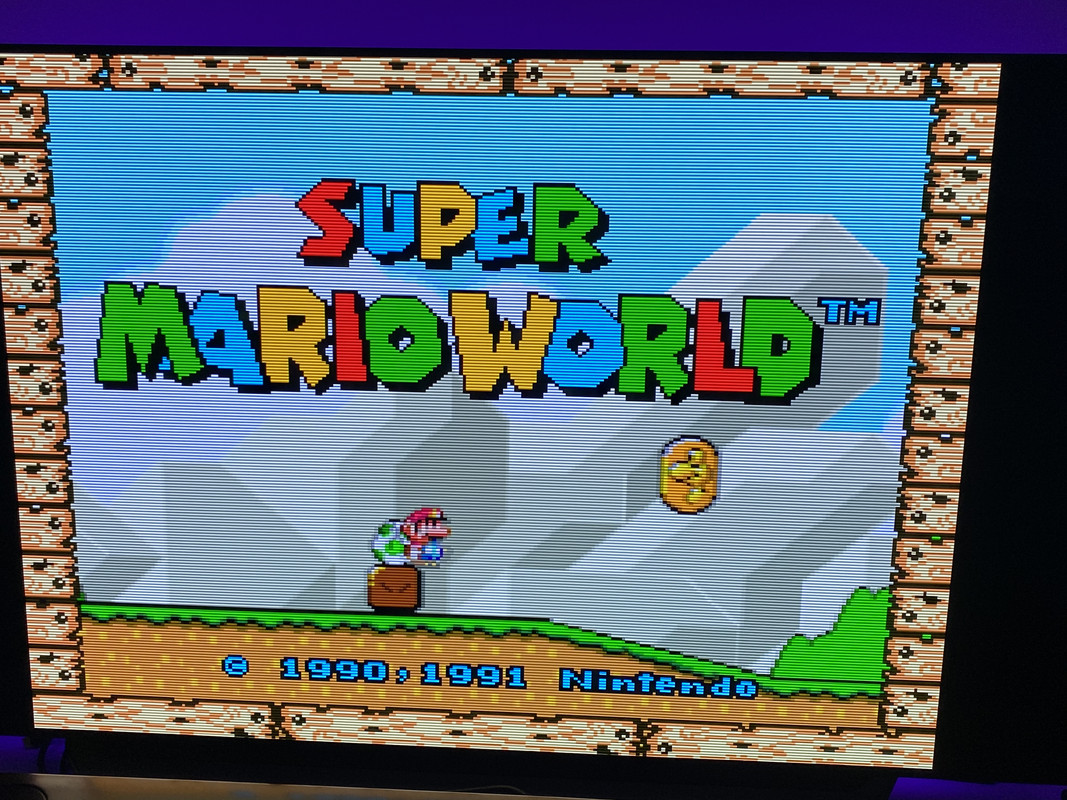Thanks Timber, suddenly looking at the website isn't so daunting. It's good to know what's require as a bare bones set up and the additional add-ons.
I wasn't entirely sure which IO board was required, I would assume the newer one but I wasn't sure about cases, USB hub and some of the other add-ons (RTC for example).
I'll be looking to pick up parts over time, I am interested in the NES and Arcade cores for now. I am hoping the PSX core will happen, I have been keeping an eye on it for a while and it looks promising.
No worries, I didn't know if the detail level was too much. The RTC is only used by 6 computer cores and even then if an internet connection is present it isn't needed. Although it's a cool option to have.
Most people have the Analog IO board above and USB hub beneath. The Analog IO board is generally loved by the purists as it allows you to use VGA analog output and reduces latency to exactly what the original machines were (with wired, original controllers). Obviously there is lag that introduced with HDMI and USB (particularly wireless bluetooth) but even so it can be kept to a minimum.
Although I haven't tried NES yet, the SNES, MD, PCE, Amiga cores I have tried are excellent. Home formats is where MiSTer currently shines. The Arcade selection is limited to mostly early to mid 80's games. There is a lot of work being done on CPS 1 and 1.5 etc. but even so there are a lot of games (Irem etc.) missing. And whilst I have few problems with the console/computer cores the Arcade ones (particularly the unofficial/alternative) do give me wierd probs. I can't get sound out of my Optical Out on the Arcade games I've tried (fine on HDMI so, might be my setup though). I wouldn't buy it for arcade games.
Aside from being able to accept cartridges and being presented in a very nice case is there actually much about the Analogue products that makes them significantly better than the DIY FPGA solutions?
I think you've probably nailed it; ultimately Analogue make very desirable FPGA machines which work out of the box and have full CS support. Albeit very expensive for non-US buyers now. The Analogue's still have some tricks that MiSTer can't currently do like playing MSU1-modded games on SNES (Saw John Linneman playing Ninja Warriors; MSU1 version on his Super Nt on a DF stream a few weeks ago). Although from a value perspective there is no competition.
----
Regarding the Amiga this is where I've got to. I followed this guide:
https://youtu.be/mky-JKVu78g to create a Workbench 3.1 with automatic boot selector where I can log straight into games or demos.
I own Amiga Forever 8 but not WB 3.1.4 so used
HstWB Installer to install WB 3.1,
Better Workbench and Arcade Game Selector. Works very well as a couch friendly setup and has no problems with playing either Amiga or CD32 games. Although for some reason I can't get glow icons to fully work, even in WinUAE. And my 16GB HDF file might have been too large. But after creating it all in WinUAE it was really simple to copy over to the MiSTer which played it first time (just as that Youtubers real Amiga did).
I didn't bother with CoffinOS which some people got to run on MiSTer or install RTG drivers (which can be done too) so my Workbench is very vanilla. I think a Vampire, PiMiga or AmiKit do an easier and better job at getting a more modern networkable Amiga up and running.
I am tempted to get an 8bitdo G Bros Wireless adaptor to be able to use my SNES SN30 2.4G Wireless controller with MiSTer. Which so far seems to mimic Linux in terms of working with any controller I've thrown at it (which I assume is due to the Linux layer MiSTer uses for basic I/O).
A few badly lit pictures of it with my Amiga creation.



